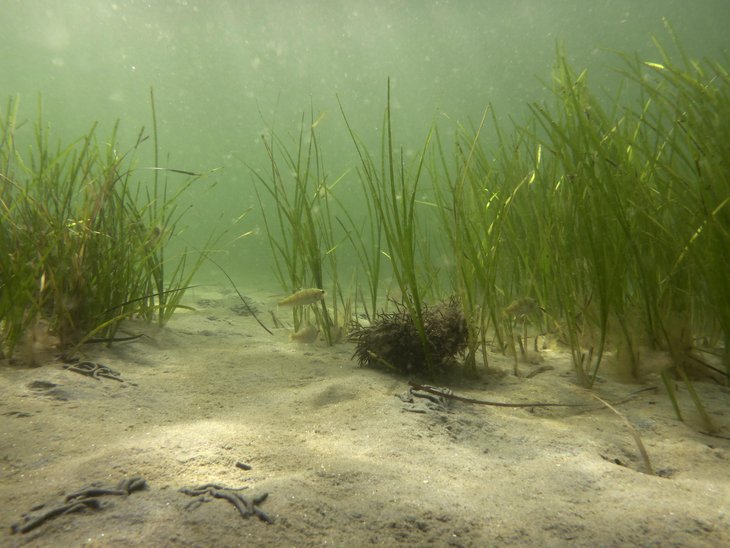The United Nations has declared the current decade the Decade on Ecosystem Restoration, as it has never been more urgent to strengthen nature and restore degraded ecosystems on land and in the ocean. However, this global environmental campaign is not only focused on “repairing damaged or destroyed ecosystems” but also includes the protection of intact forests, coastal areas, and marine habitats.
The fact is: Healthy ecosystems not only support greater biodiversity but also provide more and better benefits for both people and nature. They absorb more carbon dioxide from the atmosphere, store the captured carbon in their biomass or underground, and thus help mitigate climate change.
How ecosystems can get well again
Ecosystem restoration has so far mainly focused on terrestrial habitats, such as reforesting woodlands. Efforts to restore marine ecosystems have been relatively rare. However, recent progress has been made in coastal ecosystems, including mangroves, kelp forests, seagrass meadows, mussel and oyster reefs, and, to some extent, coral reefs.
Whether restoration efforts are successful depends on many factors. For example, it matters what type of ecosystem is being restored, how large and complex it was in the past, where it is located, and which techniques are used. Site-specific ecological factors, such as species selection and composition, must be carefully considered. At the same time, changing environmental conditions caused by climate change must also be taken into account.
Ecosystems can be restored in various ways, such as:
- Replanting key species like mangroves and seagrasses
- Reintroducing formerly native marine animals
- Removing invasive algae species or other dominant disturbances
- Most importantly, reducing human-induced stress factors so that ecosystems can focus all their energy on natural recovery. Some of the most significant stress factors include intensive fishing, uncontrolled pollution from waste, sewage, and harmful substances, overexploitation of coastal forests and meadows, development of crucial coastal areas, and disruptive ship and boat traffic.
Long-term protection and sustainable use
Even if there are initial successes, the task of restoring and protecting ecosystems is a huge challenge. It is rarely possible to fully return a destroyed coral reef or a deforested mangrove forest to its original state. The many interactions between the marine environment, living organisms, and nutrient cycles that make up an ecosystem are too complex for that. Additional complications arise from climate-related environmental changes, such as rising water temperatures and sea levels. These alter the physical conditions and thus the foundation of life in the ocean.
The restoration of marine ecosystems is most effective when it aims to strengthen the biodiversity and ecosystem services of natural habitats in the long term. This involves including all affected communities in the decision-making process, considering their demands on the ecosystem (such as revenue from fish, timber, or tourism), and finding sustainable compromise solutions accordingly.
Once an ecosystem is restored, all further human interventions should be reduced to a sustainable minimum.
- Abelson, A., Reed, D. C., Edgar, G. J., et al. & Nelson, P. (2020). Challenges for restoration of coastal marine ecosystems in the Anthropocene. Frontiers in Marine Science, 7, 544105. doi.org/10.3389/fmars.2020.544105
- Bayraktarov, E., Saunders, M. I., Abdullah, S., et al. & Lovelock, C. E. (2016). The cost and feasibility of marine coastal restoration. Ecological Applications, 26(4), 1055-1074. doi.org/10.1890/15-1077
- Boström-Einarsson, L., Babcock, R. C., Bayraktarov, et al. & McLeod, I. M. (2020). Coral restoration – A systematic review of current methods, successes, failures and future directions. PloS one, 15(1), e0226631. doi.org/10.1371/journal.pone.0226631
- Eger, A. M., Marzinelli, E., Gribben, P., et. al. & Vergés, A. (2020). Playing to the positives: using synergies to enhance kelp forest restoration. Frontiers in Marine Science, 544. doi.org/10.3389/fmars.2020.00544
- Fuchs, G., Noebel, R. vom Ecologic Institut (2023). Die Wiederherstellung von Meeres- und Küstenökosystemen. Policy Paper Reihe zur UN-Dekade zur Wiederherstellung von Ökosystemen (2021-2030), Policy Paper Nr. 6








